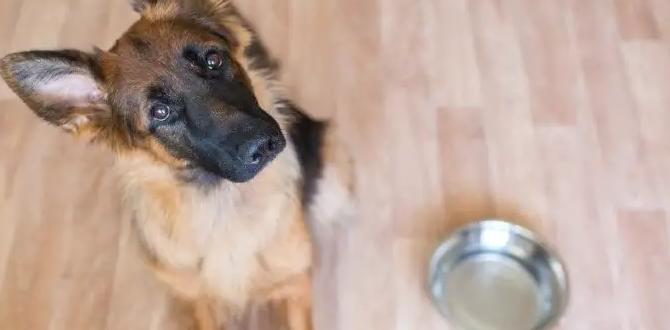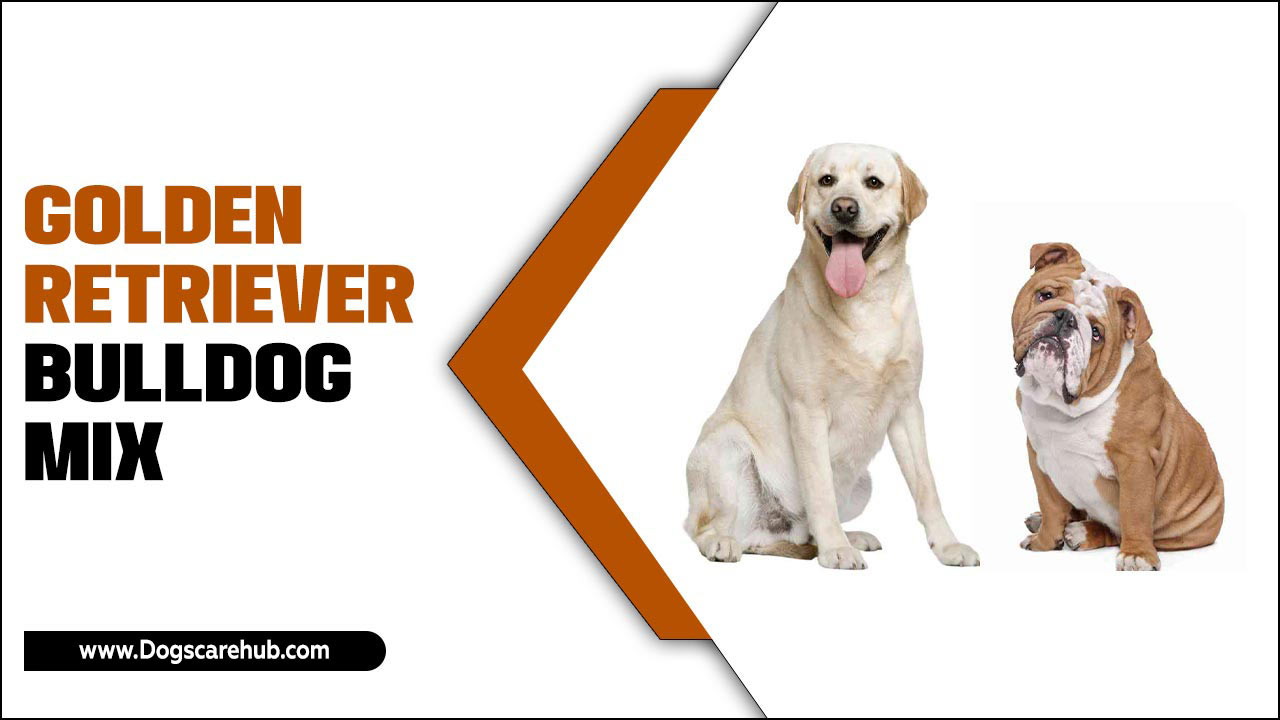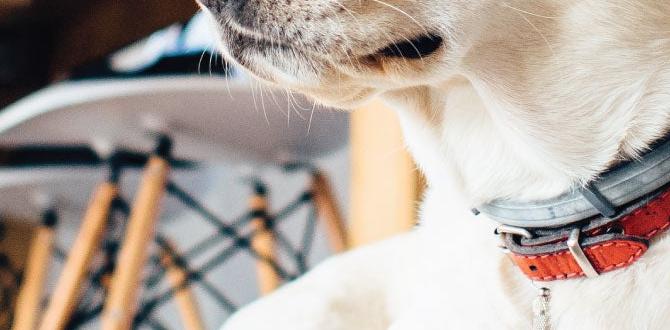Have you ever wondered why some dogs behave aggressively? It can be surprising and even scary. Imagine a friendly dog suddenly growling and barking at someone. This change in behavior can happen step by step. But don’t worry. Understanding aggressive dog behavior helps us learn how to help them. Let’s dive into this topic to figure out why dogs act this way.
Key Takeaways
- Understanding aggression helps manage dog behavior effectively.
- Aggressive dog behavior occurs in discernible steps.
- Training can reduce aggressive dog behavior step by step.
- Safety is crucial when dealing with aggressive dogs.
- Consult professionals for persistent aggression issues.
Signs of Aggressive Dog Behavior
Dogs show aggression in many ways. This can include growling, showing teeth, or barking. It’s important to recognize these signs early. When dogs become aggressive, it can build up over time. They may start by being tense or stiff. Next, they might growl when someone gets too close. If the situation isn’t handled, they could snap or bite. Understanding these signs helps us step by step. We can then work on calming the dog before things get worse.
- Watch for sudden stiffness in the dog’s body.
- Notice if the dog is growling or barking.
- Observe if the dog shows its teeth.
- Look for snapping or biting behavior.
- Pay attention to the dog’s eyes and tail position.
- See if the dog is avoiding eye contact.
- Be aware of any unusual whining or barking.
Knowing these signs helps us act quickly. It allows us to prevent aggressive behavior from escalating. Being aware of these signs is crucial. It gives us the chance to help our furry friends feel safe and calm. Taking the time to learn these signs can make a big difference in how we handle our dogs.
Fun Fact or Stats : Dogs have over 220 million scent receptors!
Understanding Why Dogs Become Aggressive
Have you ever wondered why a dog suddenly acts aggressively? There are many reasons. A dog might feel scared, sick, or protective. Sometimes, a dog feels threatened. Other times, it might want to protect its toys or food. Understanding the cause helps us address the behavior. Imagine a dog that growls when someone gets close to its food bowl. The dog could be scared of losing its food. By identifying the reason, we can work on changing this behavior step by step. Understanding these reasons helps us support our dogs better.
The Role of Training in Managing Aggression
Training plays a big role in handling aggressive dogs. It teaches dogs how to act in different situations. With training, dogs learn that being calm is rewarding. Imagine a dog that barks at strangers. With proper training, the dog learns to sit quietly instead. This takes time, but with patience, it’s possible. Training helps us address aggressive behavior step by step. It creates a positive environment for both the dog and its owner. When we train dogs, we help them understand what is expected of them.
When to Seek Professional Help
Sometimes, managing aggression on our own isn’t enough. That’s when professionals can help. Dog trainers and behaviorists know how to handle aggressive dogs. They analyze the behavior and create a plan. Imagine a dog that bites when scared. A professional can teach the dog to stay calm in scary situations. They work with the owner and the dog to solve issues. Seeking professional help ensures the safety of everyone involved. It provides the dog with the best chance for improvement.
Steps to Calm an Aggressive Dog
Calming an aggressive dog is a careful process. Every step matters. First, stay calm yourself. Dogs sense our emotions. If you’re nervous, the dog might be too. Next, try to understand why the dog is upset. Once you know the reason, you can address it. Speak softly to the dog. Avoid sudden movements. Give the dog space. Never force it into a situation. Let the dog come to you when it’s ready. Being patient and understanding helps calm the dog.
- Stay calm and composed around the dog.
- Identify the reason for aggression.
- Use a soft voice when speaking.
- Avoid making sudden movements.
- Give the dog space to relax.
- Let the dog approach you voluntarily.
- Be patient and understanding.
Calming a dog takes time. By being patient, we can help our furry friends feel secure. Each small step leads to a happier, more relaxed dog. Remember, it’s a journey, not a race.
Fun Fact or Stats : Dogs can hear sounds four times farther away than humans!
Creating a Calm Environment
Do you know what makes a dog feel at ease? A calm environment is key. Dogs, like humans, enjoy peaceful surroundings. This means reducing loud noises or sudden changes. Imagine a dog living near a busy road. The constant sound might make it anxious. Creating a quiet space helps. Provide a cozy, safe spot for the dog to relax. This makes the dog feel secure. A calm environment reduces stress and aggression.
Using Positive Reinforcement
Have you heard of positive reinforcement? It’s a way to encourage good behavior. When a dog behaves well, give it a treat or praise. This tells the dog it did something right. Imagine a dog that sits calmly when visitors arrive. Rewarding this behavior teaches the dog to repeat it. Over time, positive reinforcement can replace aggression with calm behavior. It’s a simple method but very effective. With patience, it can change a dog’s behavior step by step.
Setting Boundaries and Rules
Why are rules important for dogs? Like people, dogs need to know boundaries. This helps them understand what is allowed. Set clear rules for your dog. These can include where the dog can go or what it can do. Imagine a dog that is not allowed on the couch. By consistently reinforcing this rule, the dog learns. Boundaries create a sense of security. They help prevent confusion and aggression. Dogs feel safer when they know what to expect.
Understanding Fear-Related Aggression
Fear can make dogs aggressive. When a dog is scared, it might try to protect itself. This can lead to growling, barking, or even biting. Fear-related aggression happens when a dog feels trapped. This might occur during a thunderstorm or when meeting strangers. Recognizing fear is vital. It allows us to help calm the dog’s anxiety. Imagine a dog hiding under the bed during a storm. Using calm words and gentle pats can reassure the dog. Addressing the fear step by step helps build trust between the dog and the owner.
- Identify what scares the dog.
- Use calming words during anxious times.
- Create a safe space for the dog.
- Introduce new things slowly.
- Build the dog’s confidence gradually.
- Reassure the dog with gentle touches.
- Avoid forcing the dog into scary situations.
Helping a dog overcome fear takes time and patience. By building trust, we reduce the chance of aggressive reactions. Understanding and addressing fear strengthens the bond between humans and dogs.
Fun Fact or Stats : A dog’s sense of smell is 10,000 times more sensitive than ours!
Recognizing Fear Triggers
Do you know what triggers your dog’s fear? Identifying fear triggers is crucial. Every dog is different, and what scares one might not scare another. Some dogs fear loud noises like fireworks, while others might be scared of strangers. By observing our dogs, we can spot these triggers. Once we know what scares them, we can work on reducing their fear. Imagine a dog that shakes during thunderstorms. By comforting it during a storm, we can help ease its anxiety. Recognizing and addressing fear triggers is a big step in helping dogs feel safe.
Helping Dogs Cope with Fear
How do we help dogs cope with fear? It’s about creating a safe environment. Provide a quiet, secure space during stressful times. Use calm words and gentle touches. Gradually introduce them to their fears in a controlled way. Imagine a dog scared of car rides. Start with short trips, rewarding calm behavior. Over time, the dog associates car rides with positive experiences. Helping dogs cope with fear builds their confidence and reduces aggression.
Building Trust Through Patience
Have you ever thought about the power of trust? Building trust is key to overcoming fear-related aggression. It takes time, patience, and understanding. A dog that trusts its owner feels secure. This reduces the need for aggression. Spend time with the dog, offer treats, and use gentle words. Over time, the bond grows stronger. Trust helps the dog feel safe and lowers anxiety. By building trust, we help our dogs lead happier lives.
Importance of Early Socialization
Socialization is crucial for dogs. Meeting different people and animals helps them feel comfortable. Early socialization can prevent aggressive behavior. Imagine a puppy that meets many friendly faces. It learns that new people are not a threat. This creates a confident and relaxed dog. Early experiences shape a dog’s view of the world. By exposing them to different situations, we help them learn. Socialization should be a step-by-step process. It builds a foundation for a well-behaved dog.
- Introduce the dog to various people.
- Expose the dog to different environments.
- Let the dog meet other friendly dogs.
- Reward calm behavior in new situations.
- Start socialization at a young age.
- Use positive reinforcement for good behavior.
- Be patient and consistent.
Early socialization is vital for a dog’s development. It helps them feel at ease in the world. Dogs that are well-socialized are less likely to be aggressive. They enjoy new experiences and are confident in different settings.
Fun Fact or Stats : Puppies have 28 teeth, while adult dogs have 42 teeth!
Socializing Puppies Step by Step
Did you know puppies need socialization too? Start socialization when they’re young. Introduce them to different people, places, and animals. This helps them learn that the world is safe. Take it slow. Begin with short and positive experiences. Imagine a puppy meeting a gentle cat for the first time. If the interaction is calm, reward the puppy. Over time, the puppy learns to be confident in new situations. Socializing puppies step by step creates friendly, well-adjusted dogs.
Overcoming Adult Dog Aggression
What if your dog wasn’t socialized as a puppy? It’s never too late to start. Even adult dogs can learn to socialize. Begin with safe experiences. Introduce new things slowly and carefully. Imagine a dog scared of other dogs. Start with short, positive interactions. Gradually increase the time together. Use rewards for calm behavior. With patience, adult dogs can overcome aggression. Consistent socialization reduces fear and promotes positive interactions.
Using Playdates for Socialization
Have you considered playdates for your dog? Playdates are great for socialization. They allow dogs to meet and interact in a controlled environment. Arrange playdates with friendly, well-behaved dogs. Monitor their behavior and intervene if needed. Imagine your dog playing happily with a new friend. This experience teaches them how to interact positively. Playdates build confidence and reduce aggression. They offer a fun way for dogs to learn and grow.
Table: Common Aggressive Behaviors and Causes
| Behavior | Possible Cause |
|---|---|
| Growling | Fear or protection of territory |
| Barking | Feeling threatened or anxious |
| Snapping | Stress or discomfort |
| Biting | Fear or pain |
Conclusion
Understanding aggressive dog behavior step by step is important. It helps us handle and prevent issues effectively. By recognizing signs, providing training, and socializing early, we can reduce aggression. Always prioritize safety and seek professional help if needed. A calm, safe environment helps dogs feel secure. Remember, patience and understanding are key. With these steps, we can help our furry friends lead happier lives.
FAQs
Question: What are the first signs of dog aggression?
Answer: Early signs include growling, stiff body, and barking. Recognizing these helps manage aggressive dog behavior step by step. Addressing these signs early prevents escalation. Understanding your dog’s body language is crucial. Always approach calmly and cautiously.
Question: How can I calm an aggressive dog?
Answer: Stay calm yourself and speak softly. Give the dog space and avoid sudden movements. Understanding the cause of aggression helps address the behavior step by step. Using rewards for calm behavior is effective. Creating a safe environment also aids in calming the dog.
Question: Can training help reduce dog aggression?
Answer: Yes, training can significantly help. It teaches dogs how to react positively in different situations. Working with a professional can guide you through aggressive dog behavior step by step. Consistent training promotes calmness and confidence.
Question: What should I do if my dog shows aggression towards strangers?
Answer: Start by understanding why the dog feels threatened. Gradual exposure to strangers can help. Use positive reinforcement for calm behavior. Professional guidance may be necessary. Always prioritize safety for both the dog and strangers.
Question: Is aggressive behavior in dogs always a sign of a problem?
Answer: Not always. Aggression can be natural in certain situations, like protection. However, frequent or intense aggression needs attention. Understanding the cause helps address it step by step. Consult professionals if aggression persists.
Question: Can socialization prevent dog aggression?
Answer: Yes, early socialization is key. It helps dogs feel comfortable in different environments. Introducing them to various people and animals reduces fear. A well-socialized dog is less likely to be aggressive. Consistent and positive experiences are crucial.
Meet Elyse Colburn, the devoted canine companion and storyteller behind the enchanting world of “Tales, Tails, and Adventures Unleashed.” A passionate dog enthusiast with a heart full of paw prints, Elyse Colburn shares heartwarming tales and insightful adventures, celebrating the joy, loyalty, and endless antics that make every dog a true hero. Join Elyse Colburn on this tail-wagging journey, where every post is a love letter to our four-legged friends.








